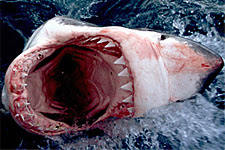Proteins, which form much of the molecular machinery required for life, are the targets of most drug molecules. One third of all proteins are membrane proteins – embedded within the cell’s fatty outer layer. While scientists can easily study the other two-thirds using such tools as antibodies, they have not had such methods to investigate the membrane-embedded portions of proteins.
To probe the secrets of these seemingly inaccessible proteins, researchers at the University of Pennsylvania School of Medicine have designed peptides that are able to bind to specific regions of transmembrane proteins, using computer algorithms, and information from existing protein sequence and structure databases.
 ‘Living Fossil’ is often a term applied to an animal that has a fossil record very far back in time but no close living relatives. This is a loose definition and taxonomists will argue about its specifics but we aren’t going to hash it out.
‘Living Fossil’ is often a term applied to an animal that has a fossil record very far back in time but no close living relatives. This is a loose definition and taxonomists will argue about its specifics but we aren’t going to hash it out.